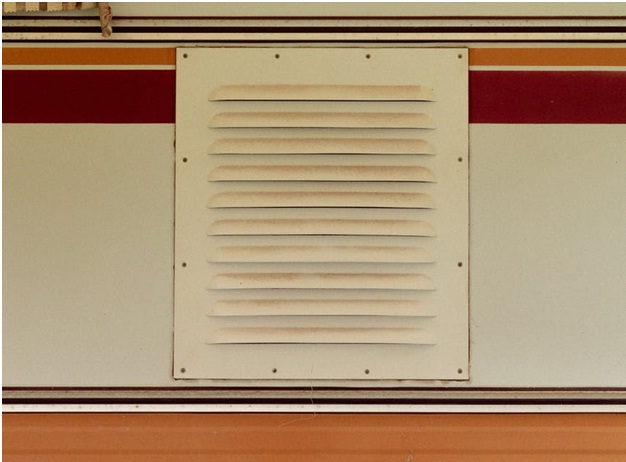Parsing the [Big] Differences between Two Rheem Air Conditioning Units

Just because it has Rheem, and even “14 SEER” and even “system” in the name, does not mean that two outwardly similar Rheem air conditioning units actually are. Despite the fact that you can expect quality from two Rheem air conditioning units, there’s a lot of difference between any two given units or systems that you can pick apart. Consider the following two examples.
Rheem RUUD “Classic” 5 Ton 14 SEER Split Air Conditioning System
This Rheem Split Air Conditioning System is rated to handle up to five tons of air and is a split system, which means that it consists of two different components that are separated from each other. In this instance, the two components of the system are a condenser (Rheem model RA14) and a Rheem air handler (Rheem model RH1T/RH2T), which we would like to take the time to assert is not a heat pump, unlike the pairings of many other split systems in our inventory.
The condenser that comes with this unit is powerful; delivering 60,000 BTUs of cooling energy, this condenser is capable of cooling up to 5 tons of air, which is difficult to equate to square footage due to climatic differences in each region of the country. However, you can expect this condenser alone to be adequate for cooling somewhere between 2,400 and 3,300 square feet, depending on several other factors.
In addition to its raw power, this condenser is made with several updated features that give it better ability to deliver. Among them are a composite base pan, a powder coat paint system, a smaller number of fasteners and rust proof screws that are used in its construction. Each of these features helps to allow the condenser to better stave off the influences of rust and corrosion for better longevity.
It also has an improved tubing design and enhanced mufflers, both of which are instrumental in keeping volume down (a big concern with outdoor condensers) as well as in improving airflow and efficiency.
The air handler that comes with this split system can provide 60,000 BTUs of cooling power and comes with a constant torque motor that can deliver efficiencies approaching 16 SEER. While it has a constant motor, it’s capable of 4 way convertible design, allowing for upflow, downflow and two way horizontal flow; making it compatible with nearly every physical arrangement and giving it a more adaptable footprint.
Because this system comes with a very powerful condenser and an air handler that is nearly equally powerful (in cooling, that is) this is a system that is well suited for hot southern climates. It can be outfitted with a field-installed auxiliary electric heater, but this system is intended to keep you cool when the temps soar.
Rheem 2.5 Ton “Classic” 14 SEER Heat Pump Split System
Now let's take a look at a different Rheem air conditioning unit, the Rheem 2.5 Ton “Classic” 14 SEER Heat Pump Split System that contains the RP14 Heat Pump Condenser and an RH1T RH2T Series indoor air handler.
This heat pump condenser is capable of providing about 30,000 BTUs of cooling power but, since it is a heat pump, can also provide for a measure of heat when the temperatures start to dip. Like the condenser mentioned in the last section, this heat pump is also made with rust-resistant fasteners (and fewer of them) along with a new composite base pan and a powder coated cabinet, among other features.
It’s significantly less powerful than the previous unit as well, which means that it’s not as well suited to larger homes in hotter areas than the 5 ton we touched on first.
It comes with an air handler that can also deliver approximately 36,000 BTUs of cooling power and this one also has a constant torque motor and is capable of 4 way flow options. It’s also compatible with a field installed electric heat kit, giving it some more power in the winter.
Besides the fact that the power of this unit is smaller, its pairing with an outdoor heat pump condenser makes it more utilitarian in some scenarios than the model explored previously. For one thing, it’s better suited to smaller homes and cold climates; for another, it brings along the benefits of a heat pump.
Among these are general longevity (heat pumps have fairly long lifespans), high energy efficiency, and the ability to both heat and cool your home fairly efficiently as well. Heat pumps might have a high upfront cost, but they’re expected to pay themselves off relatively quickly.
On that note, contact us for more information about pricing. Not only do we make it a common practice to provide heating and cooling solutions at the lowest possible prices, but we also provide a price match guarantee, free shipping and excellent customer service. Give us a call at 855-473-6484 if you have any questions about any of these things, or about either of the units we explored here.
Recent Posts
-
ProParts Replacement Condenser Fan Motors for AC Repair
When your home's air conditioner stops cooling, one of the most common causes is a failed condenser …6th Jul 2025 -
Goodman 3.5 Ton 13.4 SEER2 Straight Cool Horizontal Package Unit
For homeowners and contractors seeking a durable, energy-efficient HVAC solution in a self-contained …29th Jun 2025 -
Goodman 2.0 Ton 14.3 SEER2 Heat Pump System
Goodman 2.0 Ton 14.3 SEER2 Heat Pump System For those needing a reliable and efficient climate solut …22nd Jun 2025



